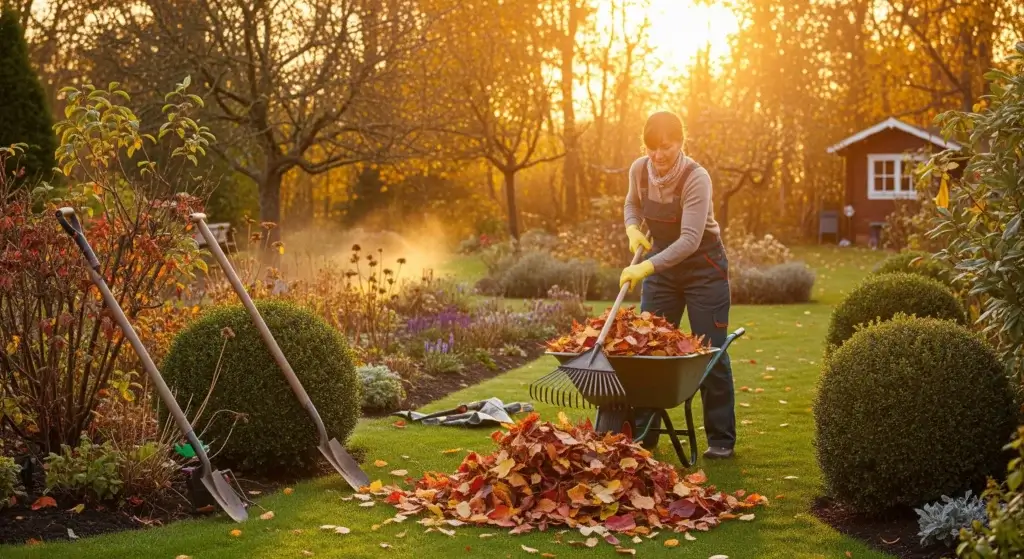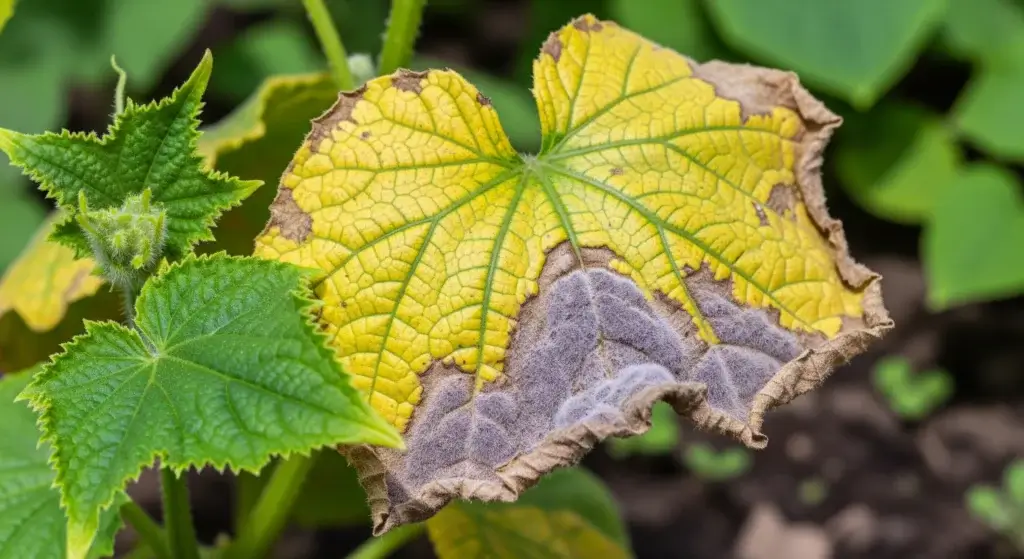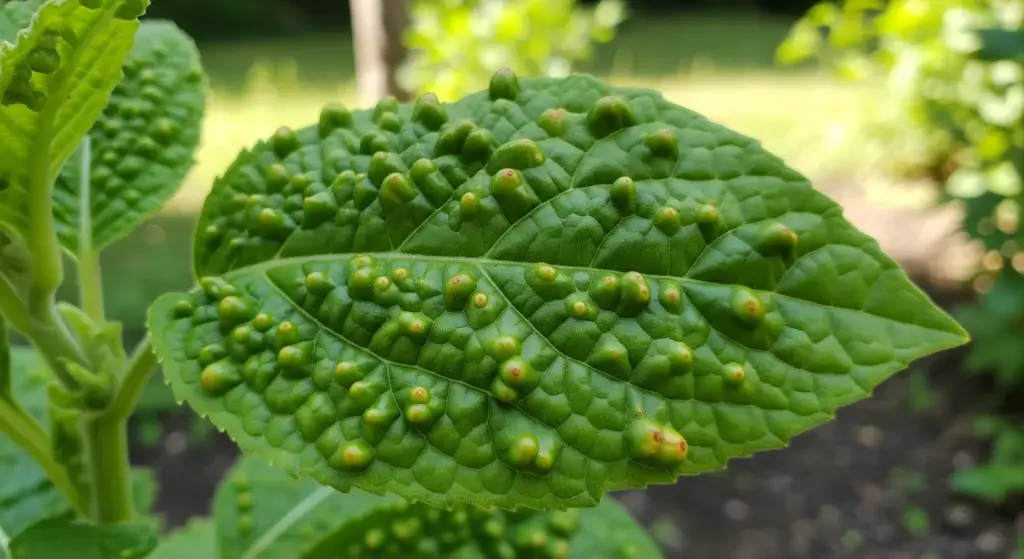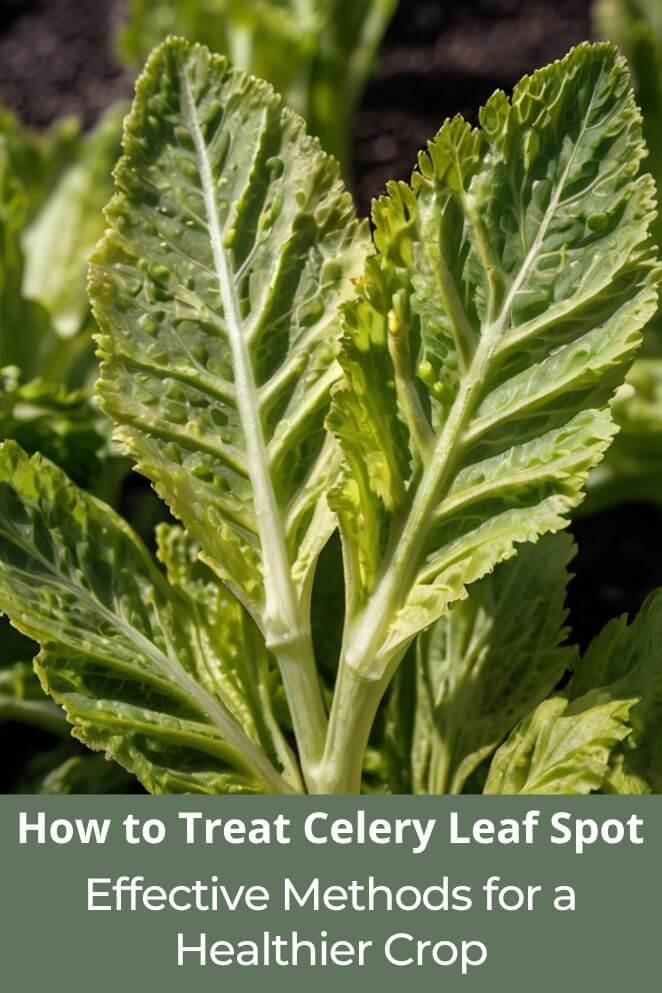
Trying to grow celery? Watch out for celery leaf spot — it’s like the moldy version of a garden villain.
Caused by a fungus with a fancy name (Septoria apiicola), it starts as little wet spots on the leaves and turns into brown or black blotches.
Left unchecked, it makes your plants wilt like they just watched a sad movie.
Think of it as the “early blight” drama queen of the celery world. Catch it early, and your crunchy greens stay snack-worthy. Miss it, and it’s celery’s final season.
What Is Celery Leaf Spot?
So, your celery’s lookin’ a little crusty?
Meet its arch-nemesis: celery leaf spot, a fungal drama brought to you by Septoria apiicola (yep, sounds like a wizard school dropout).
This fungus lives its best life when it’s warm, wet, and humid — kinda like it’s vacationing in a tropical spa.
Key facts:
- Villain name: Septoria apiicola
- Also goes by: Early blight, Septoria blight (yeah, it’s extra)
- Loves: Temps between 59–80°F and high humidity
- Gets around via: Dirty tools, wind, rain splashes, and even infected seeds — rude.
Symptoms to Watch For
If your celery starts showing these signs, it’s basically texting you “HELP”:
- Little yellow spots pop up on the older leaves — cute at first, then not.
- Spots get darker — turning brown or black, like they’re going emo.
- Multiple spots gang up and merge into mega blotches.
- Leaves turn yellow, wilt like they’re on a drama series, and then fall off.
- Seeds from infected plants might not even sprout — talk about ghosting.
Pro tip: Start by checking the bottom leaves — that’s where this fungal freeloader usually makes its first move.
- Read also: Issues and Solutions: Troubleshooting Tomato Leaf Problems
- Read also: Gardening Hacks: Solving the Yellow Leaf on Pothos
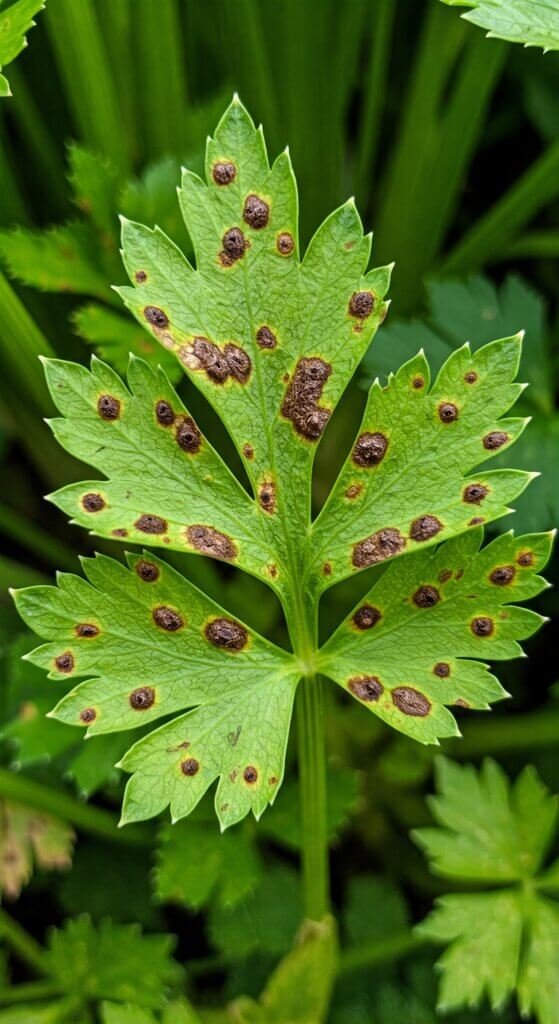
Causes and How It Spreads
If celery leaf spot were a movie villain, here’s how it makes its dramatic entrance — and how it keeps spreading like spoilers on TikTok.
How it all starts:
- Infected seeds or transplants = the original bad apples
- Soaked leaves from heavy rain or sprinkler showers? That’s its ideal spa day
- Tight plant spacing means less airflow — basically a sweaty mosh pit for spores
- Messy garden cleanup leaves infected leaf bits behind — gross and risky
- Dirty tools or hands spread spores faster than a group chat rumor
Life cycle of Septoria apiicola:
This fungus doesn’t just show up and leave.
Oh no — it’s got a full routine:
- Chills in old plant debris or inside bad seeds like a fungus sleeper agent
- Launches spores using wind or raindrops — nature’s version of “DM for drama”
- Wakes up in 24–48 hours if things are damp — it needs moisture to go beast mode
- Makes little spore factories (called pycnidia — yeah, science!) to infect nearby leaves
- Cycle repeats, turning your celery patch into a full-blown fungal telenovela
How to Treat Celery Leaf Spot Effectively
Dealing with celery leaf spot? Don’t worry — you’ve got options, like a Marvel hero picking gear before a boss fight. T
he trick is to act fast, stay consistent, and mix up your defense moves.
1. Remove infected leaves immediately
First thing’s first: ditch the sick leaves.
How to do it:
- Use clean garden shears (wipe with bleach or alcohol first — no gross germs allowed).
- Chop off the infected leaves like they’re toxic friendships.
- Toss them in the trash away from your garden. No composting — or it’s like inviting the fungus to stay for brunch.
2. Improve airflow and drainage
Celery hates being squished. Moist, crowded leaves are fungus heaven.
Think of it like wearing a wet hoodie all day — gross, right?
Do this:
- Give plants room: 6–12 inches of space = no elbowing.
- Use stakes to keep them growing up, not all floppy.
- Avoid swampy soil. If your garden’s a puddle, use raised beds so water drains like a boss.
3. Water wisely
Fungus loves wet leaves.
So don’t make it easy for them to move in.
Do:
- Water in the morning, like giving your plants breakfast.
- Use drip irrigation or soaker hoses — direct to the roots, not the face.
- Always water the base, not the leaves.
Don’t:
- Don’t water at night — wet leaves + darkness = fungal rave party.
- Don’t splash water everywhere like you’re in a rom-com rain scene.
4. Apply organic fungicides
If the problem’s not too wild, organic fungicides can handle it without turning your garden into a chemistry lab.
Try these:
Copper-based sprays
- Use every 7–10 days if it’s humid or rainy.
- Look for brands like Bonide or Southern Ag.
Neem oil
- Fights fungus and bugs.
- Spray weekly (but not under hot sun unless you want fried celery chips).
Bacillus subtilis
- Found in products like Serenade®.
- Basically, pro-biotics for your plants!
5. Use chemical fungicides (for severe cases)
If things get real ugly — like, Walking Dead levels — chemical fungicides might be your last line of defense.
Heavy hitters:
- Chlorothalonil (aka Daconil)
- Azoxystrobin (aka Quadris)
- Mancozeb
- Tebuconazole
Pro tips:
- Don’t overuse the same stuff — fungi are smart, and they will build resistance like video game bosses.
- Read the labels like you’re studying for finals.
- Wear gloves, goggles, the whole science-lab look.
And hey, always double-check your local rules before using the strong stuff — nobody wants to break laws while saving lettuce.
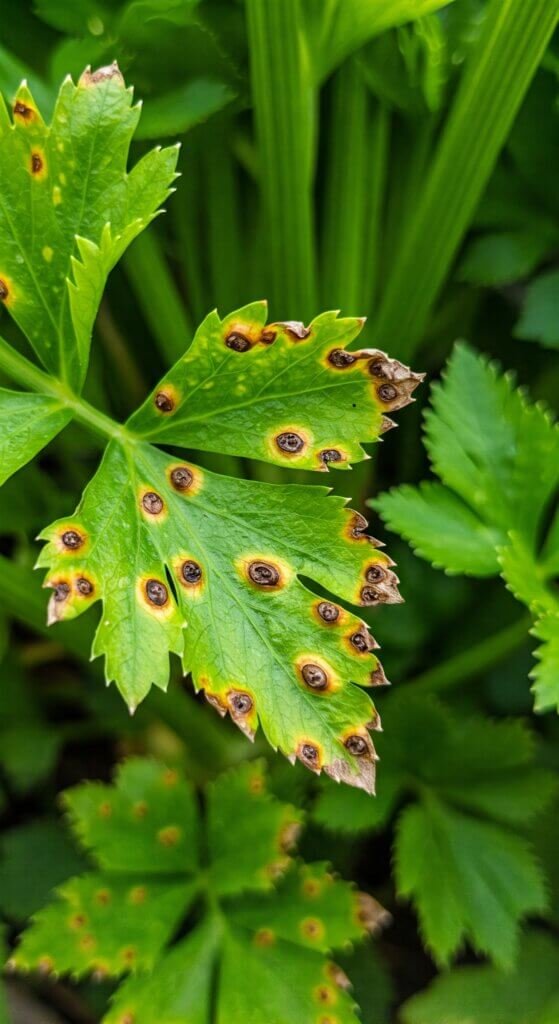
How to Prevent Celery Leaf Spot
Think of this like prepping your garden for battle. Prevention is your best armor — cheaper, easier, and way less dramatic than fighting a full-on fungal invasion later.
Here’s how to keep your celery squad safe and healthy:
1. Use disease-free seeds and transplants
Buy seeds from trusted sources — no shady side deals from sketchy suppliers.
Or give your seeds a spa day at home.
Two options:
- Hot water treatment: Soak those seeds in hot-but-not-boiling water (122°F or 50°C) for 25–30 minutes. It’s like a fungal detox bath.
- Fungicide coating: Buy seeds pre-treated with antifungal armor. Think of it as tiny celery soldiers with hazmat suits.
2. Rotate Crops Regularly
Don’t plant celery in the same spot every year — it’s like hanging out with your ex way too much.
Rotate to keep things fresh and fungi-free.
Why it works:
- Fungus spores can lurk in soil like creepers.
- Switching beds every 2–3 years messes up their plans.
- Also avoids drama with other Apiaceae fam like carrots, parsley, and fennel.
3. Mulch to prevent splashing
When it rains or you water your plants, dirty little fungal spores can splash up from the soil like they’re in a muddy mosh pit.
Fix it with mulch:
- Use straw, shredded leaves, or wood chips (composted = bonus points).
- Keep a 2–3 inch blanket around your celery’s base — like a fungal force field.
4. Clean tools and hands
Your tools can be snitches — spreading spores from one plant to another like gossip at lunch.
So:
- Wipe down shears, gloves, and any garden gear between uses.
- Wash your hands like you just chopped jalapeños and need to take your contacts out.
5. Monitor regularly
Check your plants every week like they’re your Snapchat streak.
Spot anything weird? Act fast.
- Yellow spots? Brown blotches? Time to snip, sanitize, and take action.
- Early action = no full-blown fungus meltdown.
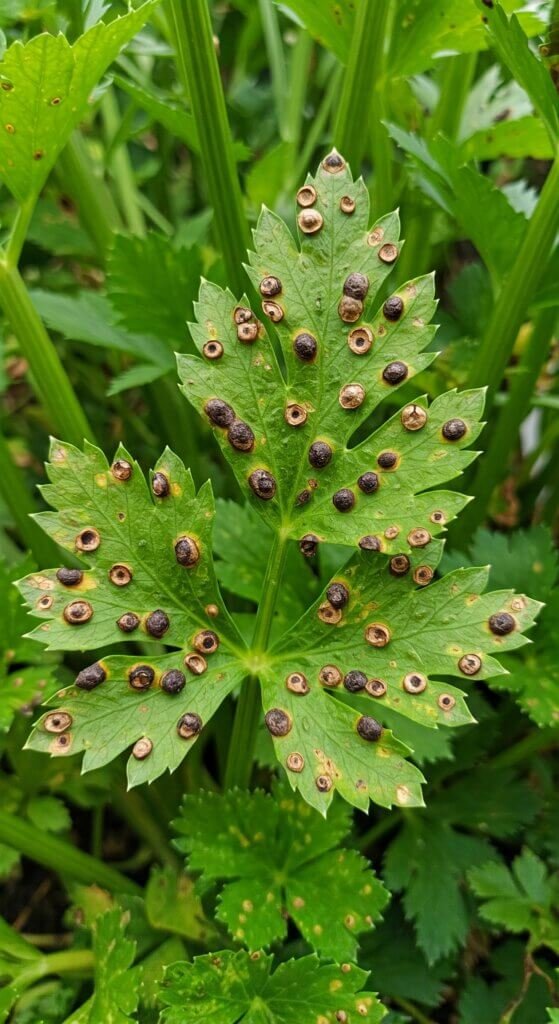
Companion Planting Tips to Boost Resistance
Just like every superhero has a sidekick (hello, Batman and Robin), celery grows better when it’s planted with the right buddies.
Some plants help keep pests and fungi away, while others just help everyone breathe easier. Let’s meet the dream team:
Leeks
These tall, skinny legends don’t just add flavor to soup — they repel bugs like garlic to vampires.
Plus, they’re long and lean, so they slip right between celery rows without stealing the spotlight (or the sunlight).
Spinach
Spinach is low to the ground and super chill.
It minds its own business, doesn’t block airflow, and helps cover the soil so pests don’t throw wild parties down there.
Thyme or sage
These herbs smell amazing (to us), but bugs and fungi can’t stand them.
They’re like the natural Febreze of the garden with serious antifungal street cred.
- Read also: Spinach Leaf Miners: Understanding the Damage and Prevention
- Read also: Why Are My Spinach Leaves Turning Yellow? What You Need to Know
Conclusion: Keep Your Celery Spot-Free and Thriving
Celery leaf spot might show up like the annoying villain in a plant-based horror movie, but guess what? You’ve got the tools to win this fight.
Catch those funky leaf spots early, treat ’em like a pro, and follow smart garden habits to stop the fungus from throwing a rave in your soil.
Whether you’re growing celery to impress your grandma or run your own veggie empire, a little consistency and cleanliness go a long way.
Think of it like skincare for your plants — cleanse, protect, repeat.
Stay sharp, stay leafy, and may your harvests be crunchy, green, and drama-free.

